Working at height is one of the most dangerous tasks in any industry, with falls consistently ranking among the leading causes of workplace injuries and fatalities. Whether it’s a roofer walking a steel beam, a technician servicing a wind turbine, or a warehouse worker loading a truck, the risk is real—and often deadly.
That’s why having a reliable fall arrest system in place isn’t optional—it’s essential.
This comprehensive guide explores everything you need to know about fall arrest systems: what they are, how they work, the components involved, types suited for different tasks, and best practices for safe and effective use. Whether you’re a safety manager, supervisor, or worker at height, this article will help you understand not only how to stay compliant with safety standards like OSHA and ANSI, but more importantly, how to save lives.
Let’s dive in and uncover how these systems protect workers from tragedy—and what you must do to ensure they work when it matters most.
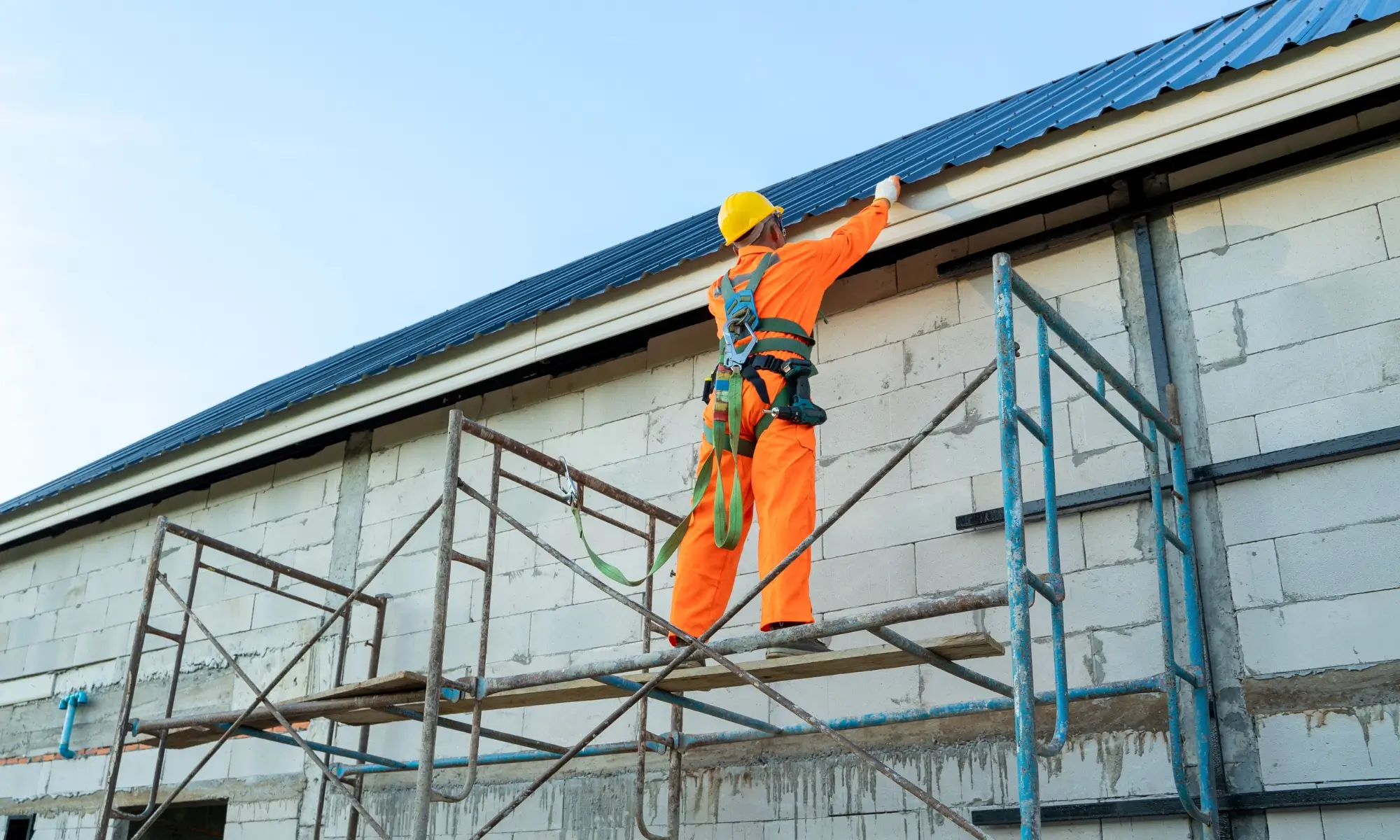
What Is a Fall Arrest System?
A fall arrest system is a form of personal protective equipment (PPE) that stops a person from hitting the ground or a lower surface during a fall. It doesn’t prevent a fall from happening, but instead “arrests” or stops it mid-air, absorbing energy and reducing the impact on the body.
These systems are a last-resort solution when collective fall prevention measures like guardrails or scaffolds are not feasible. According to OSHA, they are essential in any workplace where there’s a risk of falling from a height, typically over 6 feet (1.8 meters).
Why Fall Arrest Systems Matter
According to OSHA, falls are consistently among the leading causes of workplace fatalities — especially in construction. Regulations require fall protection for workers operating above certain height thresholds (usually 4 feet in general industry and 6 feet in construction) due to the many causes of working at height accidents that can occur unexpectedly. A fall arrest system isn’t just recommended; it’s often legally required.
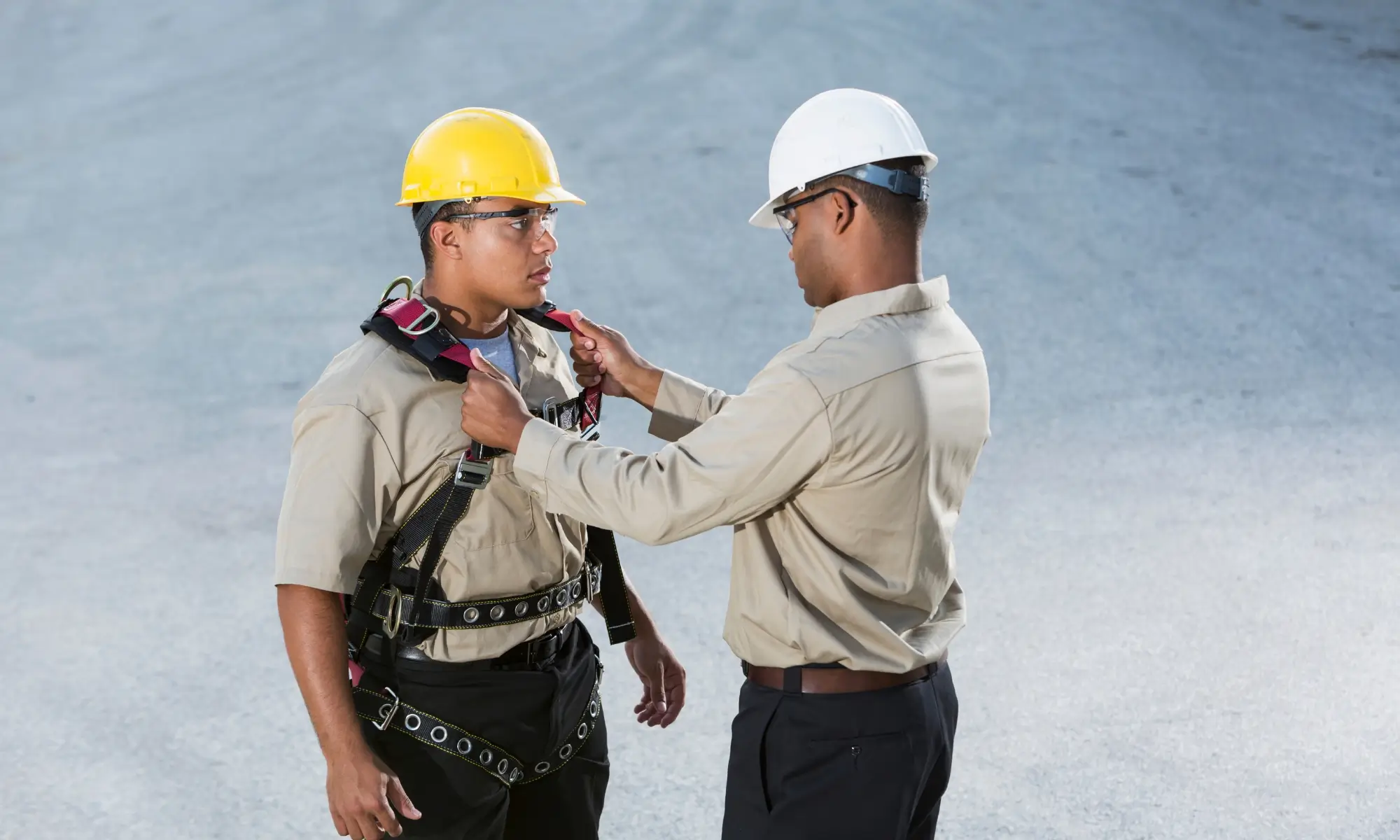
Key Components of a Fall Arrest System
A fall arrest system works effectively only when all its components function together. Each part has a specific role to play in protecting the worker during a fall. Here are the three primary components:
1. Anchorage Point (Anchor)
A secure point where the fall arrest system is attached, like a steel beam, column, or engineered anchor device.
- Purpose: To hold the entire system in place and bear the forces of a fall. According to OSHA, it must support at least 5,000 lbs (22.2 kN) per person tied off.
- Examples: Roof anchors, beam clamps, or fixed structures designed for fall protection.
2. Body Harness
A full-body harness worn by the worker, designed to distribute fall forces safely across the body.
Purpose: To support the worker during and after a fall, preventing injury by spreading the force across the shoulders, thighs, chest, and pelvis.
Features to look for:
- Proper fit and adjustability
- D-rings (usually on the back, and sometimes on the sides or front)
- Compliance with ANSI Z359.11 or EN 361 standards
3. Connecting Device (Lanyard or Lifeline)
This links the harness to the anchorage point. It could be a shock-absorbing lanyard, a self-retracting lifeline (SRL), or a rope grab system.
Purpose: To arrest the fall and reduce the impact of the force transferred to the worker’s body. Many of these devices include shock absorbers or deceleration mechanisms.
Types:
- Shock-absorbing lanyards – Stretch and absorb energy during a fall
- SRLs – Extend and retract automatically, reducing fall distance
- Rope grabs – Move along vertical lifelines and lock during a fall
Optional but Important Add-ons:
- Harness Accessories: Tool lanyards, comfort padding, suspension trauma straps
- Anchorage Connectors: Beam straps, roof anchors, or horizontal lifeline systems
You can’t remove or substitute one component. If any part is missing, damaged, or misused, the entire system can fail, risking the worker’s life. That’s why inspections and training are essential.
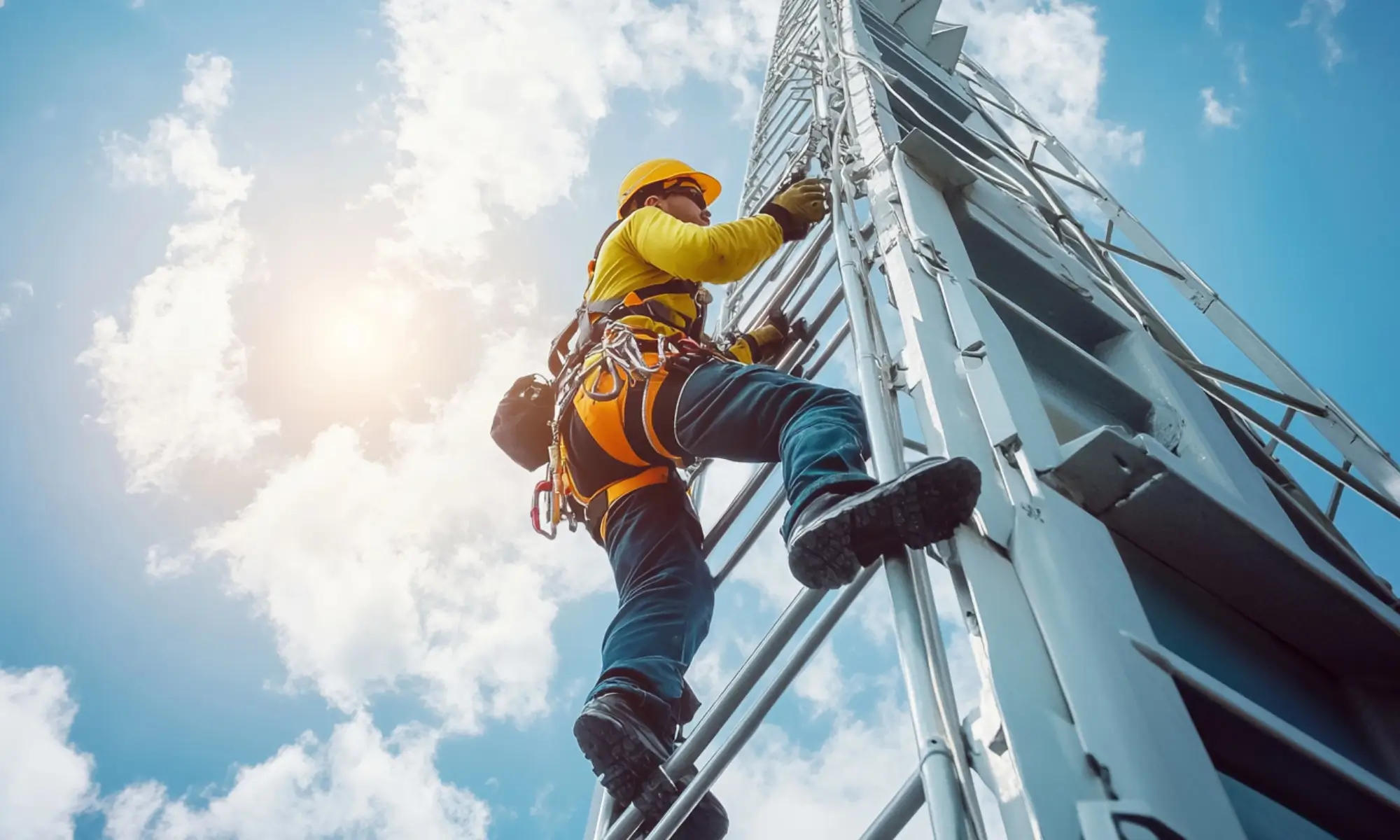
Types of Fall Arrest Systems
Fall arrest systems come in different forms, each tailored to specific work environments and tasks at height. Choosing the right type ensures both safety and mobility. Here are the main types:
1. Personal Fall Arrest System (PFAS)
A complete system worn by one worker to stop a fall in progress.
Includes:
- Full-body harness
- Anchorage point
- Connecting device (lanyard or lifeline)
Best for: General use on rooftops, scaffolding, aerial lifts, and unguarded edges.
Why it matters:
It’s the most widely used system, offering direct protection for individual workers.
2. Self-Retracting Lifelines (SRLs)
Lifelines that automatically extend and retract as the worker moves. They lock instantly when a fall occurs.
Best for: Jobs requiring mobility and limited fall distance, such as warehouse loading docks, towers, or confined spaces.
Advantages:
- Minimized fall distance
- Quick arrest reduces injury risk
- Allows more movement than traditional lanyards
3. Horizontal Lifeline Systems
Cable or rail systems are installed horizontally along elevated work areas. Workers attach their lanyard or SRL to the line and move along the length safely.
Best for: Long rooftops, bridges, building maintenance, and steel construction.
Advantages:
- Continuous fall protection across wide areas
- Multiple users can tie off (if rated appropriately)
4. Vertical Lifeline Systems
Lifelines are installed vertically along ladders, poles, or towers. A rope grab or traveler device moves with the worker.
Best for: Climbing fixed ladders, telecommunication towers, or wind turbines.
Advantages:
- Fall protection while ascending or descending
- Ideal for confined or narrow vertical spaces
5. Mobile Fall Arrest Systems
Portable systems like overhead rail systems or mobile anchorage units that can be moved from one site to another.
Best for: Temporary work at height where permanent systems aren’t installed—like truck loading areas or aircraft maintenance.
Advantages:
- Flexibility
- No need for permanent structure modifications
Summary Table:
| Type | Best Use Case | Key Feature |
|---|---|---|
| PFAS | General fall protection | Personal, complete system |
| SRL | Areas with limited fall clearance | Fast-acting, retractable cable |
| Horizontal Lifeline | Long, unprotected walking surfaces | Lateral movement with tie-off |
| Vertical Lifeline | Ladder or tower climbing | Vertical tracking and locking |
| Mobile Systems | Temporary or changing job sites | Portable and reusable |
Choosing the right type depends on the work environment, height, movement needed, and whether the system is permanent or temporary.

How a Fall Arrest System Works During a Fall
When a worker using a fall arrest system falls from height, the system activates immediately to stop the fall, absorb the shock, and prevent impact with the ground or lower level. Here’s how it all works:
1. The Fall Occurs
As soon as the worker loses balance or footing, gravity takes over and they begin to fall. At this point, the fall arrest system is still in a passive state, connected but not yet activated.
2. The Connecting Device Engages
Whether the worker is attached by a shock-absorbing lanyard or a self-retracting lifeline (SRL), the connector is the first to react:
- Shock-absorbing lanyards stretch and deploy an internal deceleration pack, slowing the fall.
- SRLs instantly lock and stop the descent within a short distance (usually within 2 feet or 0.6 meters).
This reduces the fall arrest force—the amount of force transferred to the worker’s body—keeping it within safe limits (typically under 1,800 lbs or 8 kN).
3. The Harness Distributes the Load
As the fall is arrested, the full-body harness takes the brunt of the remaining force.
- It spreads the impact evenly across the shoulders, thighs, chest, and pelvis.
- This prevents injury to critical areas like the spine or internal organs.
Because the harness is designed to keep the worker upright and stable, it helps maintain a safe body position while suspended.
4. The Anchorage Point Holds the System
The anchorage point bears the total load of the fall and keeps the worker suspended in place.
- It must be strong enough to support at least 5,000 lbs (22.2 kN).
- Ideally, it’s positioned directly overhead to minimize swing falls.
If the anchorage fails, the entire system becomes ineffective—so choosing and inspecting the anchor is critical.
5. Suspension and Rescue
Once the fall is arrested, the worker is left hanging in their harness.
- Time is critical—hanging too long can cause suspension trauma, a potentially fatal condition caused by restricted blood flow.
- A rescue plan must be activated immediately to safely retrieve the worker.
A fall arrest system doesn’t stop a fall from happening—but it ensures the fall ends safely. It works within seconds, but that split-second action is the difference between a close call and a catastrophe.
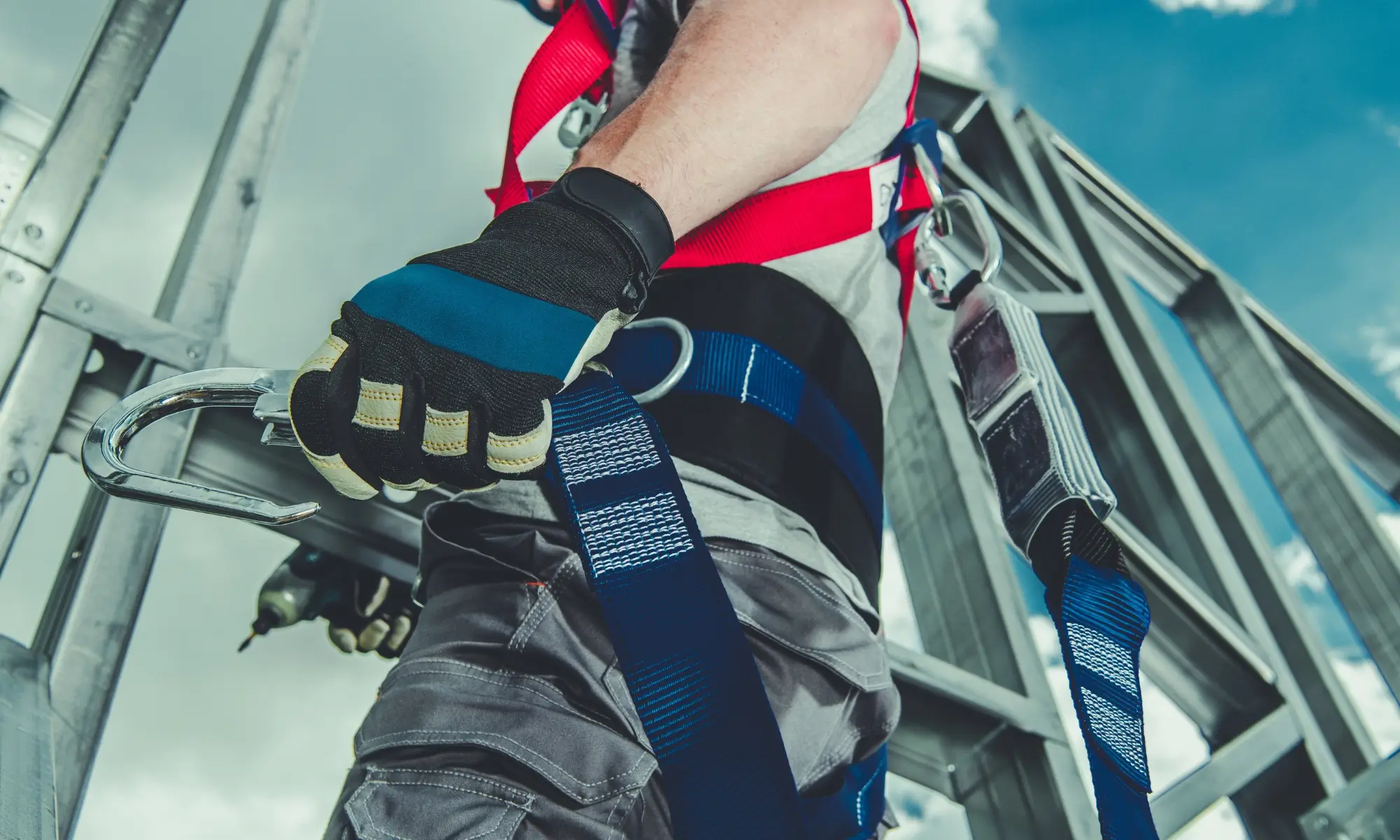
Industries and Scenarios Where Fall Arrest Systems Are Used
Fall arrest systems are critical wherever workers are exposed to fall hazards—typically any situation involving work at height, unguarded edges, or elevated platforms. These systems are used across a variety of industries to meet both safety and regulatory requirements.
1. Construction Industry
Construction workers frequently work on roofs, scaffolding, ladders, and steel frameworks—all of which pose fall risks.
Scenarios:
- Roofing and siding installations
- Steel erection and beam walking
- Scaffold work
- Formwork or rebar placement
Example: A steelworker walking along a narrow I-beam 20 feet above ground wears a full-body harness connected to a horizontal lifeline system.
2. Building Maintenance and Window Cleaning
Workers cleaning high-rise windows or maintaining building façades are often suspended in mid-air.
Scenarios:
- Window washing on multi-story buildings
- External maintenance using suspended platforms or bosun’s chairs
- HVAC or signage repair on rooftops
Example: A window cleaner uses a self-retracting lifeline attached to a rooftop anchor while descending from the top of a skyscraper.
3. Oil & Gas and Energy Sectors
Working on elevated rigs, towers, or inside confined vertical spaces poses serious fall risks.
Scenarios:
- Drilling platforms
- Wind turbine maintenance
- Working atop oil storage tanks
- Climbing transmission towers
Example: A wind turbine technician climbs inside a nacelle using a vertical lifeline system and rope grab device for fall protection.
4. Manufacturing and Warehousing
Maintenance tasks in factories and warehouses often require access to overhead structures or mezzanines.
Scenarios:
- Overhead crane maintenance
- Accessing storage racks
- Cleaning elevated machinery
Example: A warehouse worker performing maintenance on an overhead conveyor system uses an SRL connected to an overhead rail system.
5. Transportation and Logistics
Loading and unloading vehicles, especially flatbed trucks or railcars, exposes workers to fall risks.
Scenarios:
- Securing loads on trailers
- Inspecting or maintaining large vehicles
- Refueling railcars or cargo tanks
Example: A logistics worker ties off to a mobile fall arrest system while securing cargo on a flatbed truck.
6. Utilities and Telecommunications
Climbing utility poles, communication towers, or working on elevated cable lines requires reliable fall protection.
Scenarios:
- Tower climbing for antenna installation
- Utility pole repairs
- Cable maintenance at height
Example: A telecom technician climbs a 100-foot cell tower using a vertical fall arrest system with a cable grab device.
7. Aviation and Aircraft Maintenance
Aircraft maintenance crews often work on wings, fuselages, and tail sections, where slips can lead to serious falls.
Scenarios:
- Repairing aircraft on tarmacs
- Working on fuselage from scaffolds or access ladders
- Refueling and inspections
Example: An aircraft technician uses a portable overhead anchor system while inspecting the tail of an aircraft.
Any industry involving work at height should be using fall arrest systems. From construction sites to aircraft hangars, these systems save lives by stopping falls before they turn fatal.
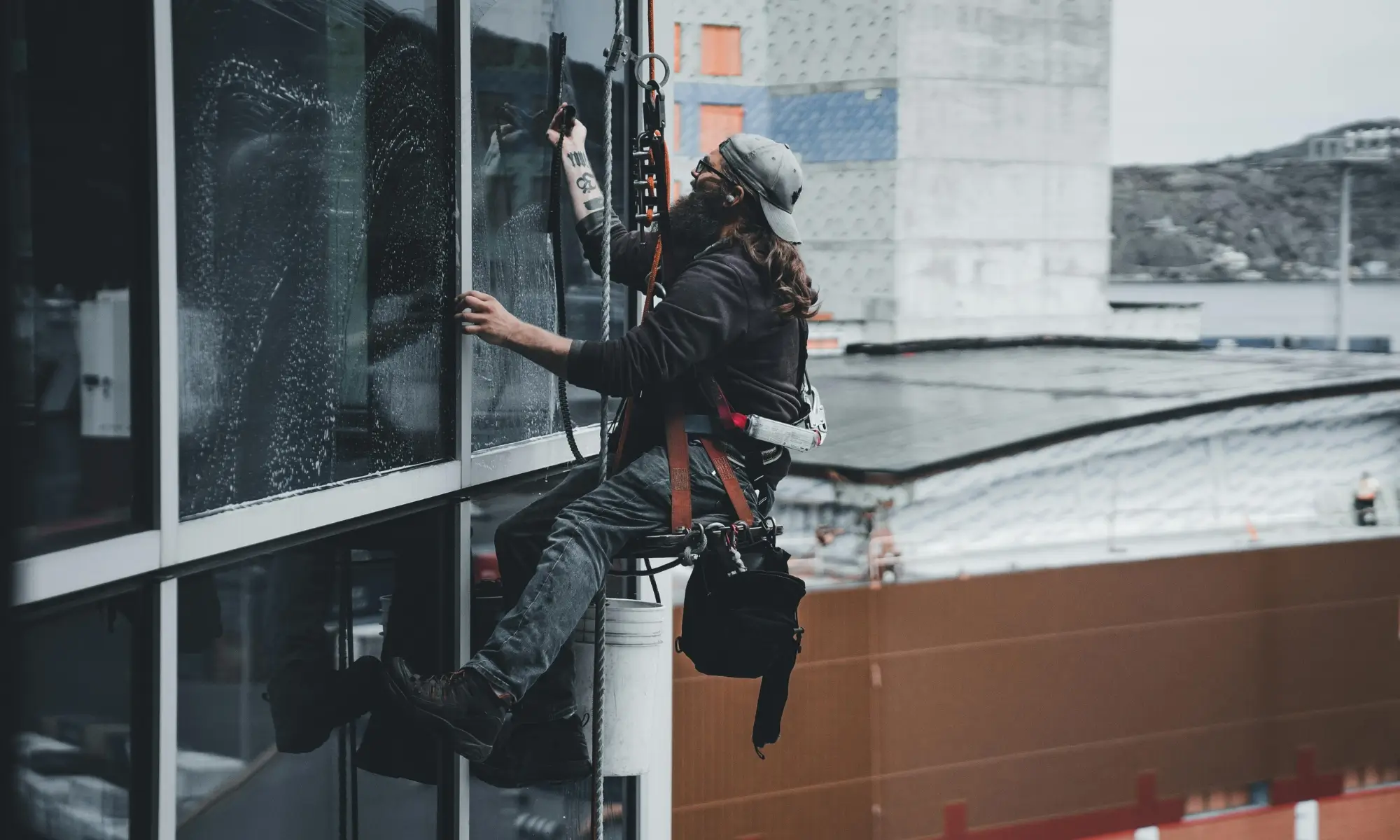
Best Practices for Using Fall Arrest Systems
Using a fall arrest system is not just about wearing a harness—it’s about proper planning, equipment selection, and applying the hierarchy of control for work at height before resorting to PPE as a last line of defence. Following these best practices can significantly reduce the risk of injury and ensure compliance with safety standards.
1. Conduct Pre-Use Inspections
Defective or worn-out equipment can fail during a fall.
What to check:
- Frayed straps or cuts in harnesses
- Damaged stitching or rust on connectors
- Cracks, bends, or corrosion in anchorage points
- Functional locking mechanisms on hooks and SRLs
Inspect equipment before every use, and document formal inspections regularly.
2. Ensure Proper Fit and Adjustment
A poorly fitted harness can cause serious injury even if the fall is arrested.
Tips:
- Chest strap should be at mid-chest level
- Leg straps snug but not tight
- D-ring should be centered between the shoulder blades
- Adjust straps without over-tightening
3. Train All Workers Thoroughly
Even the best equipment is useless if workers don’t know how to use it.
Training should include:
- How to inspect, wear, and connect components
- How the system works during a fall
- Emergency and rescue procedures
- Awareness of fall hazards and fall clearance
4. Calculate Fall Clearance and Swing Fall Risk
If there’s not enough clearance below the worker, a fall may result in impact with a lower surface.
Include in your calculation:
- Lanyard length
- Deceleration distance (usually 3.5 ft or 1.1 m)
- Harness stretch
- Worker’s height
Watch out for swing falls—where a worker swings into a wall or structure during a fall. Position anchorage points overhead and directly above the work area.
5. Use the Right Equipment for the Job
Not all equipment is suitable for every task or environment.
Examples:
- Use SRLs where fall clearance is limited
- Use horizontal lifelines when horizontal movement is needed
- Use vertical lifelines for fixed ladder climbs
6. Implement a Rescue Plan
A fall arrest system saves a worker from hitting the ground—but they may still be hanging and in danger of suspension trauma.
Rescue plans must:
- Be written and site-specific
- Include clear roles and responsibilities
- Use proper rescue equipment (like winches or ladders)
- Be practiced regularly
7. Store and Maintain Equipment Properly
UV rays, chemicals, moisture, and dirt degrade PPE over time.
Tips:
- Clean harnesses with mild soap and air dry
- Store gear in dry, cool places away from sunlight
- Never modify equipment or tie off in unauthorized ways
- Retire gear after a fall or when damaged
A fall arrest system is only effective when it’s complete, correctly used, regularly inspected, and backed by a rescue plan. Safety is a system—every link matters.
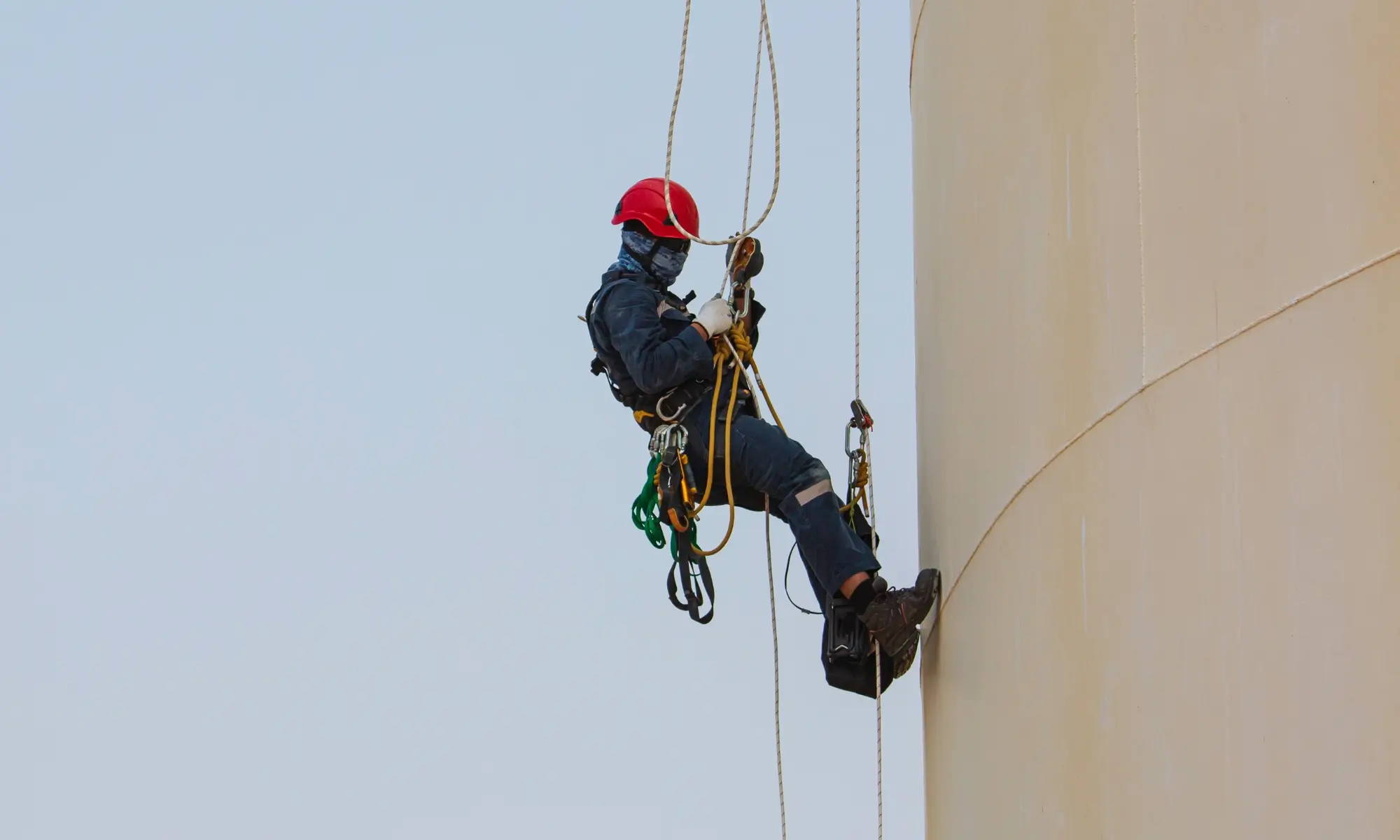
Common Mistakes to Avoid with Fall Arrest Systems
Even with quality equipment, fall arrest systems can fail if misused. Avoiding these common mistakes can save lives and keep your workplace compliant with safety regulations.
1. Using Damaged or Worn Equipment
Frayed harness straps, rusted connectors, or cracked anchor points can break under the force of a fall.
Avoid it by:
- Inspecting gear before each use
- Replacing damaged or expired components immediately
- Keeping detailed inspection logs
2. Improper Anchorage
Tying off to an uncertified anchor (like pipes, scaffolds, or rebar) can cause total system failure.
Avoid it by:
- Using anchor points rated for at least 5,000 lbs (22.2 kN)
- Verifying anchorage strength with a qualified person
- Installing engineered anchors where needed
3. Incorrect Harness Fit
A loose or wrongly worn harness can cause severe injury, even if the fall is arrested.
Avoid it by:
- Training workers on correct harness fitting
- Ensuring leg, chest, and shoulder straps are properly adjusted
- Keeping the D-ring centered on the back
4. Ignoring Fall Clearance Requirements
If there isn’t enough space below the worker, they can hit a lower level before the system activates.
Avoid it by:
- Calculating total fall distance (lanyard length + deceleration + worker height + harness stretch)
- Choosing shorter lanyards or SRLs when clearance is limited
5. Lack of a Rescue Plan
After a fall, the worker may be suspended and in danger of suspension trauma if not rescued quickly.
Avoid it by:
- Developing a written, job-specific rescue plan
- Training workers on rescue procedures
- Keeping rescue gear accessible on-site
6. Inadequate Training
Untrained workers may misuse equipment or make unsafe decisions at height.
Avoid it by:
- Providing hands-on training and refresher courses
- Ensuring workers know how to inspect and use all components
- Covering hazard awareness and emergency response
7. Not Using the Full System
Using only a harness without a proper anchor or connector renders the system useless.
Avoid it by:
- Ensuring all three components (anchor, harness, and connector) are in place and compatible
- Never improvising or mixing incompatible brands
8. Using the Wrong Equipment for the Job
Lanyards may not be suitable for tight spaces; SRLs might not be ideal for long horizontal travel.
Avoid it by:
- Assessing the work environment
- Selecting equipment designed for the task
- Consulting fall protection specialists if unsure
Mistakes are often the result of rushing, poor planning, or lack of training. Slow down, inspect, and double-check—because fall protection only works when used correctly and completely.
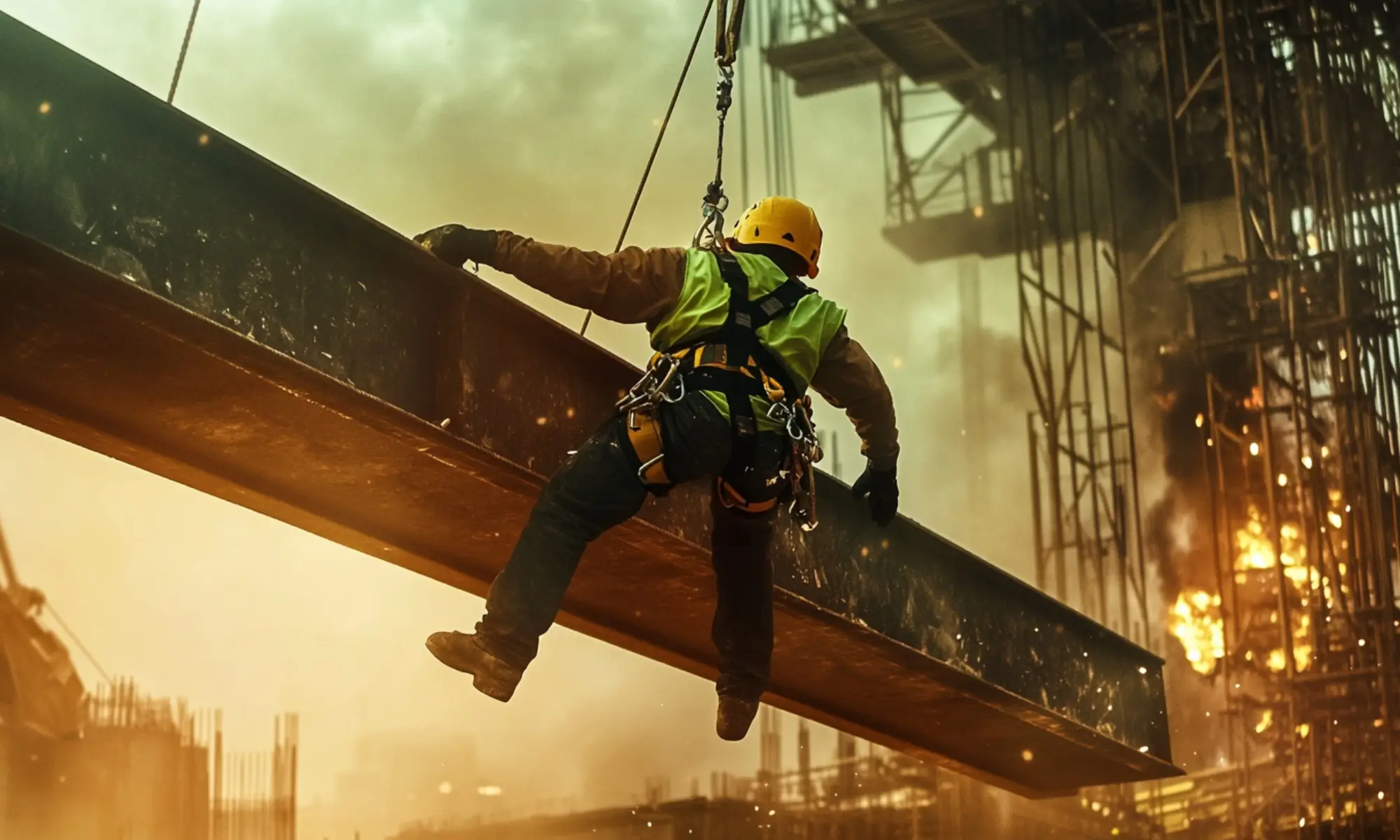
Fall Protection Regulations and Standards
To ensure workplace safety and legal compliance, fall protection systems must meet specific regulations and standards set by national and international bodies. These rules define how fall protection equipment should be designed, used, and maintained.
Here are the key regulations and standards you need to know:
1. OSHA Standards (United States)
Regulatory Body: Occupational Safety and Health Administration (OSHA)
Primary Regulation: 29 CFR 1926 Subpart M – Fall Protection
Key Requirements:
- Fall protection is required at 6 feet (1.8 meters) or more in construction, and 4 feet in general industry.
- Employers must provide a fall protection system whenever employees are exposed to fall hazards.
- Systems must be able to withstand a force of 5,000 lbs (22.2 kN) per person tied off.
- A written fall protection plan is required for certain work scenarios.
2. ANSI Standards (United States)
Governing Body: American National Standards Institute
Relevant Code: ANSI/ASSE Z359 – Fall Protection Code
Purpose: While OSHA sets mandatory regulations, ANSI provides voluntary but highly recommended standards for best practices in equipment design, testing, and usage.
Key ANSI Z359 Standards:
- Z359.1 – General requirements for fall arrest systems
- Z359.2 – Minimum requirements for a managed fall protection program
- Z359.11 – Full-body harness performance standards
- Z359.13 – Lanyards and energy absorbers
Why it matters: Following ANSI standards helps companies exceed OSHA requirements and improve safety culture.
3. EN Standards (Europe)
Governing Body: European Committee for Standardization (CEN)
Relevant Standards:
- EN 361 – Full-body harnesses
- EN 362 – Connectors (like carabiners and hooks)
- EN 354 – Lanyards
- EN 355 – Energy absorbers
- EN 363 – Personal fall protection systems
Key Highlights:
- Equipment must carry CE certification
- Products undergo rigorous testing for load, wear, corrosion, and impact
- EN standards apply across the European Union and are essential for cross-border safety compliance
Other Notable Standards
- CSA Z259 (Canada): Comprehensive fall protection regulations under the Canadian Standards Association
- ISO 10333 (International): Guidelines for personal fall arrest systems and testing
Why Compliance Matters
- Legal Protection: Non-compliance with OSHA or national standards can lead to heavy fines, lawsuits, or shutdowns.
- Worker Safety: Proper systems save lives. Falls remain a top cause of fatalities in construction and industrial settings.
- Insurance & Liability: Accidents due to non-compliance can invalidate insurance and increase company liability.
Always choose equipment that meets or exceeds local and international standards, train your teams on how to use it, and regularly review your fall protection program. Remember—compliance is the foundation, but safety is the goal.
Final Thoughts
A fall arrest system isn’t just a piece of equipment—it’s a complete safety strategy. From the anchorage point to the body harness and connecting device, every component plays a vital role in saving lives when a fall occurs. But even the best gear is ineffective without proper training, inspections, and planning.
By understanding how fall arrest systems work, choosing the right type for the job, and following best practices, you create a safer environment for everyone working at height. Avoiding common mistakes, staying compliant with regulations, and preparing for emergency rescues aren’t extras—they’re essentials.
Whether you’re managing a job site or working on one, remember this: a fall can happen in seconds, but prevention is always in your hands.

